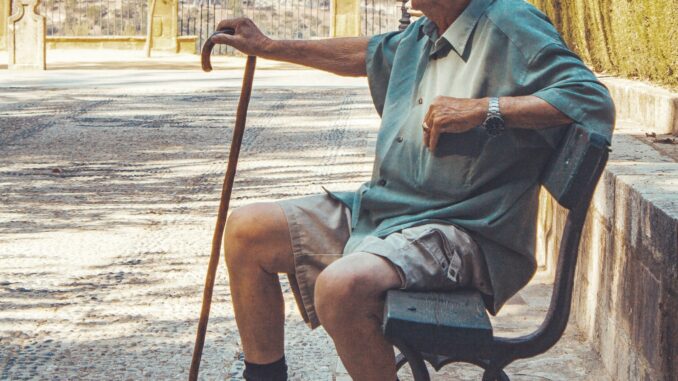
MUMBAI — India’s old age homes performed better in their response to the novel coronavirus compared with nursing homes and assisted living facilities in Western countries, a study by analysts from the Indian Institute of Public Health has found.
The study, which has not been peer-reviewed, was conducted with 44 care homes in the states of Maharashtra, Rajasthan and Gujarat, each of which has a high Covid-19 infection rate.
“As the pandemic spread across the globe, many reports and studies pointed to a high infection rate and high mortality due to Covid-19 among the elderly population in the nursing homes and assisted living facilities in the West,” said Jallavi Panchamia, lead author of the study and a professor at the Indian Institute of Public Health.
“Surprisingly, there were no reports from India’s old age homes. This triggered our curiosity, and we decided to look into the impact of Covid-19 in these institutions.”
Of the 44 old age homes surveyed from September to November, seven reported a total of 146 positive Covid-19 cases and four deaths among their residents. Of the four residents who died from the coronavirus infection, three had diabetes and one had diabetes and high blood pressure.
“Our findings from old age homes in India are surprising. The administrators seem to have initiated some right steps at the right time,” said Panchamia.
A similar trend was observed in 26 old age homes in India’s capital of New Delhi. “In nearly 1,500-odd residents in these care homes, only 5 persons contracted Covid-19,” said Dr. Prasun Chatterjee, associate professor of geriatric medicine at the All India Institute of Medical Sciences.
Despite these statistics, the study’s authors say a larger study with a bigger sample size is needed for a comprehensive analysis.
“It could be that our older people were protected very well, but a larger study can provide us with other explanations,” said Dileep Mavalankar, director of the Indian Institute of Public Health and a co-author of the study.
Chatterjee agrees: “An in-depth analysis and comparison with the nursing homes in the Western countries are needed to derive a thorough conclusion.”
Panchamia said an initial round of the survey conducted in nearly 20 old age homes in May and June in the three states showed zero infections. But the authors continued to follow up, and the analysis of the data from September to November was published in the recent study.
“Our analysis shows that the administrators of the old age homes initiated some crucial steps that helped in controlling the spread of infection,” said Panchamia. “First and foremost, these facilities were cut off from the outside world. The staff was mandated to reside on the premises and not travel back home every day. No visitors were permitted, and we believe these were the key steps in infection control.”
In many countries in the West, in contrast, some caregivers in nursing homes and assisted living facilities worked at multiple centers and traveled home every day, thus increasing the chances of being carriers of the virus, the author of the study said.
According to the study, the old age homes in India ensured proper sanitization of all outside items before entering the premises.
“They [old age homes] also took care of proper sanitization of the premises on a frequent basis. Testing of inmates was done before taking new admission in few institutions, and for the rest, they remain closed for new entries to avoid the outbreak,” the study states.
Efforts were taken to provide more space in the old age homes by asking families and relatives to take some of the elderly residents back home. The study states that 26 percent of the occupants in the 44 old age homes were sent back to their home or a relative’s home before the lockdown.
“The elderly people are the most vulnerable to Covid-19 infection,” the study states. “As per the reports, age is the most important determinant in the magnitude of the spread and effect of Covid-19, particularly after 65 years.”
“Also, donors are common visitors to these homes, but due to the lockdown as well as financial strain, the visit of donors stopped, too. This turned out as help in containing the virus,” Chatterjee said.
For those residents who required medical care, “Three care homes had a facility of resident doctors for a medical emergency and well-equipped hospitals to refer. Two care homes had difficulty reaching out to hospitals during referral and the availability of ICU beds for Covid-19 patients. About 80 percent of the care homes had a facility of isolation and quarantine ready if any cases arise,” the study states.
Observers in India say that the country’s old age homes have always suffered from shortages of manpower and medical equipment. “The ratio of residents and caregivers is estimated to be 60:1,” said Chatterjee.
According to a 2018 report by Tata Trusts on old age facilities in India, “There is no source of knowledge or guidance for them in the form of standards and best practices, even though some facilities and their management are interested in improving the quality of care they provide.
“There is a crying need to enhance the capacity almost eight to ten-fold over the next decade,” the report states.
India has over 1,100 facilities with the capacity to house around 97,000 elderly residents, according to the country’s 2011 census.
(Edited by Uttaran Das Gupta and Judith Isacoff)
The post India’s Old Age Homes Report Low Covid-19 Mortality, Study Says appeared first on Zenger News.
